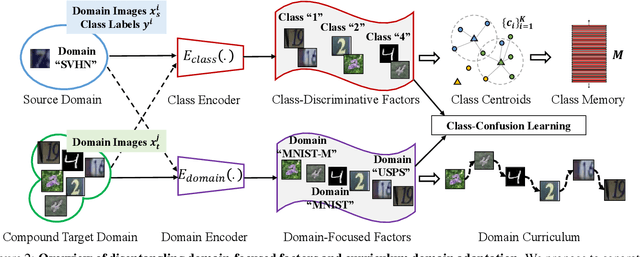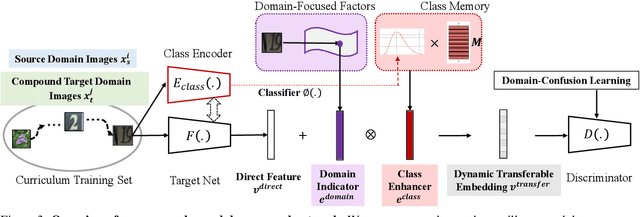Compound Domain Adaptation in an Open World
Paper and Code
Sep 08, 2019



Existing works on domain adaptation often assume clear boundaries between source and target domains. Despite giving rise to a clean problem formalization, such form falls short of simulating the real world where domains are compounded of interleaving and confounding factors, blurring the domain boundaries. In this work, we opt for a different problem, dubbed open compound domain adaptation (OCDA), for studying the techniques of training domain-robust models in a more realistic setting. OCDA considers a compound (unlabeled) target domain which mixes several major factors (e.g., backgrounds, lighting conditions, etc.), along with a labeled training set, in the training stage and new open domains during inference. The compound target domain can be seen as a combination of multiple traditional target domains each with its own idiosyncrasy. To tackle OCDA, we propose a class-confusion loss to disentangle the domain-dominant factors out of the data and then use them to schedule a curriculum domain adaptation strategy. Moreover, we use a memory-augmented neural network architecture to increase the network's capacity for handling previously unseen domains. Extensive experiments on digit classification, facial expression recognition, semantic segmentation, and reinforcement learning verify the effectiveness of our approach.
 Add to Chrome
Add to Chrome Add to Firefox
Add to Firefox Add to Edge
Add to Edge